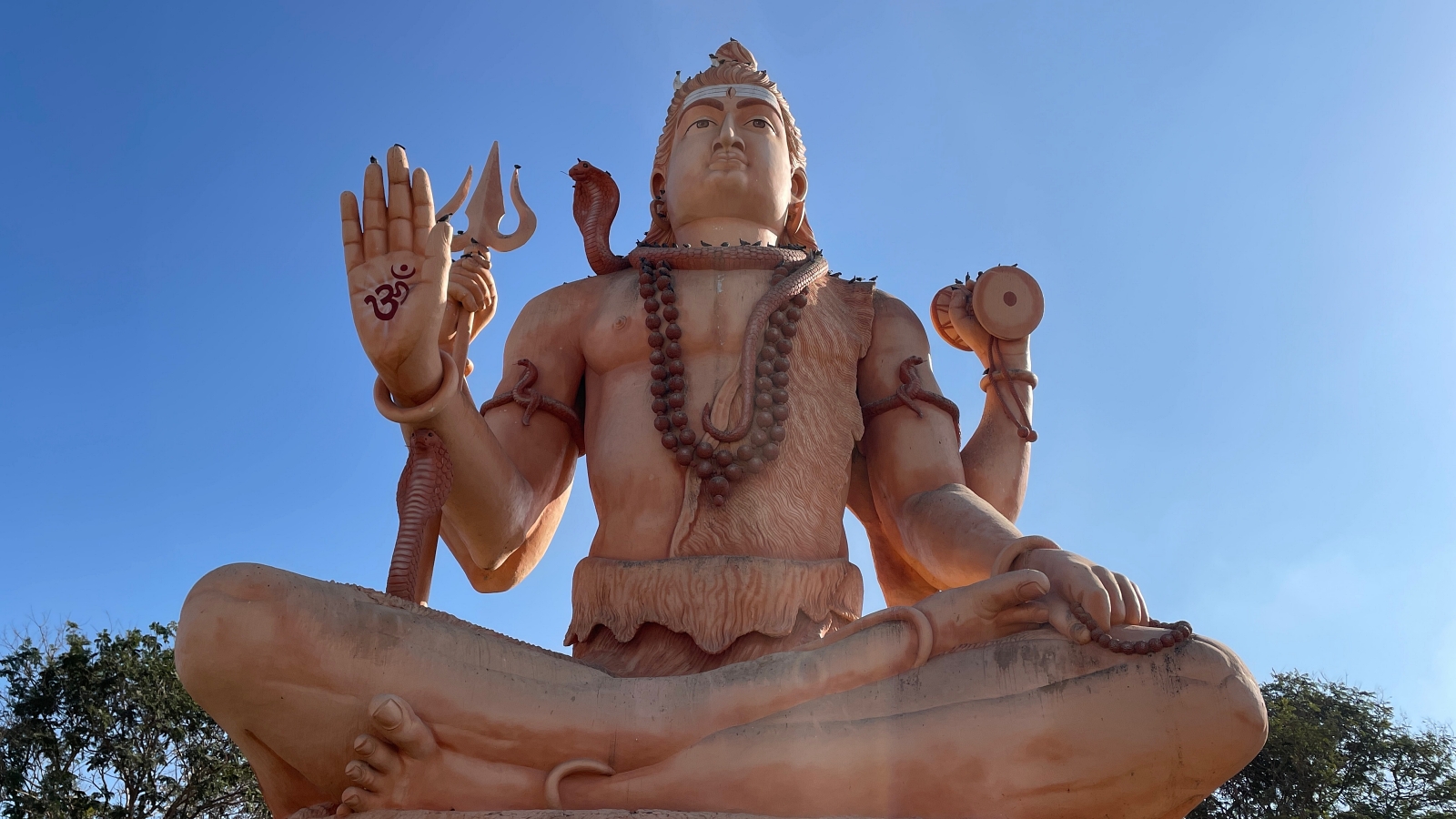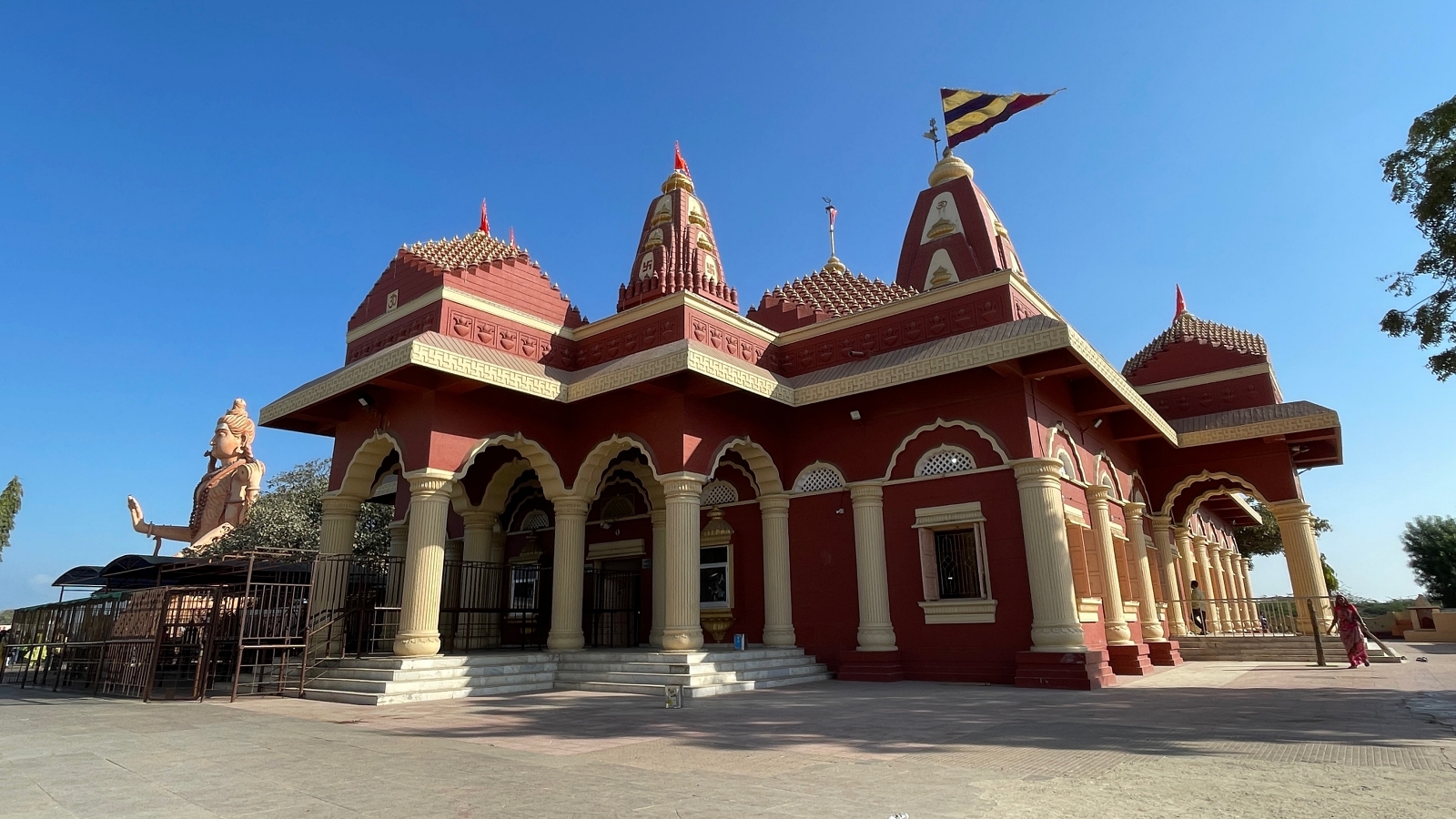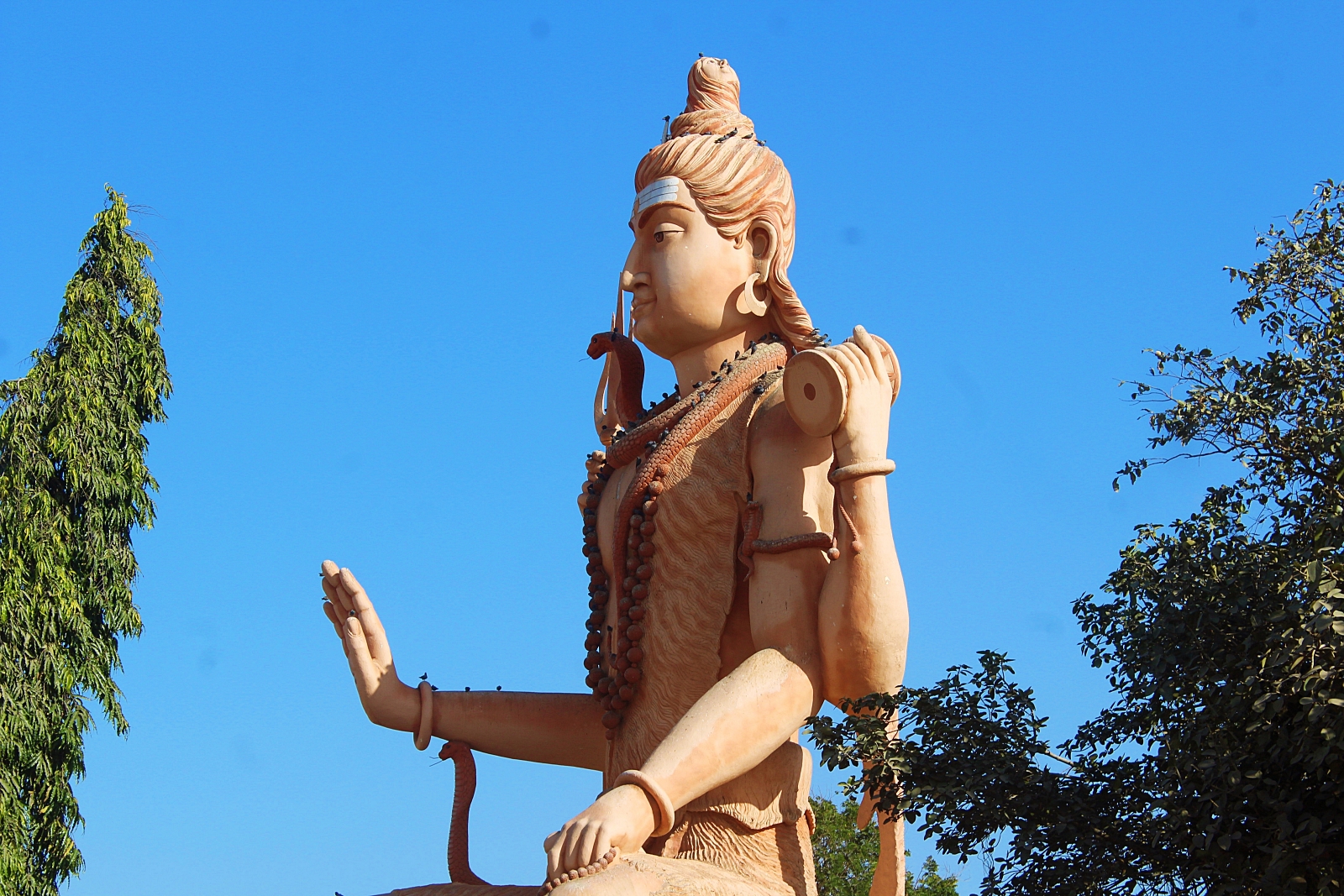Nageshwara Jyotirlinga: Holiest Shrine in Gujarat
Nestled on the coast of Saurashtra in Gujarat, between the bustling Dwarka city and the serene Beyt Dwarka Island, lies a significant temple dedicated to Lord Shiva. This hallowed sanctuary enshrines one of the 12 revered Swayambhu (self-existent) jyothirlingas in the world, housed within a captivating underground sanctum. Beyond its spiritual significance, the serene atmosphere of Nageshwara Jyotirlinga is further enhanced by a majestic 25-meter statue of Lord Shiva in a seated posture, surrounded by a peaceful garden adorned with a glistening pond. Adding to the mystique, intriguing archaeological findings suggest the presence of five previous cities buried beneath the site, whispering tales of a rich and ancient past.

The name “Nageshwar” traditionally evokes the image of the Cora, the divine serpent encircling Lord Shiva. Devotees hold a profound conviction that prayers offered at this sanctuary grant immunity against harm from serpentine perils. This steadfast belief highlights the temple’s unparalleled importance, drawing a myriad of worshippers to seek its protective embrace.

Steeped in history and legend, this sacred site houses one of India’s twelve revered Jyotirlingas – a self-manifested Shiva Linga. Just a stone’s throw from the bustling town, the red-hued structure beckons devotees. Step through its grand entrance and follow the expansive hall, leading you to the inner sanctum where the Shiva Linga resides. But the spiritual journey doesn’t end there. A short distance away, the glistening waters of Gopi Talav Tirth beckon. This sacred lake, entwined with tales of the Gopis, whispers stories of their unwavering devotion to Lord Krishna, culminating in their final act of merging with the very soil here.
Nageshwar once referred to as ‘Darukavana,’ an ancient epic appellation for an Indian forest, holds within its embrace a tapestry of legendary tales. Below, we delve into the cherished myths that enshroud this mystical temple.
Legend has it that within these sacred grounds, a demon named Daaruka once imprisoned a devout follower of Shiva, Supriya. Supriya’s unwavering chants of ‘Om Namaha Shivay’ reached the ears of Lord Shiva, who descended upon this site and defeated the demon. It is said that a self-manifested Shivalinga emerged, becoming the object of reverence to this day. In the ancient verses of the Rudra Samhita, Nageshwar is hailed as ‘Daarukaavane Naagesham’.

Another tale speaks of the ‘Balakhilyas,’ a cadre of diminutive sages, who, in the depths of Darukavana, worshipped Lord Shiva tirelessly. In a test of their devotion and endurance, Shiva appeared before them as a naked ascetic adorned solely with serpents, challenging their spiritual resolve. The sages’ wives were drawn to the ascetic’s divine presence, forsaking their spouses in pursuit of him. Enraged and disturbed, the sages, in their fury, cursed the ascetic to lose his linga, a symbol with profound theistic significance beyond its literal interpretation. As the linga fell to the earth, the entire world quaked in response. Concerned for the earth’s safety, Lord Brahma and Lord Vishnu beseeched Lord Shiva to retrieve his linga and avert catastrophe. Shiva, in his compassion, reassured them and reclaimed his linga. This sacred event, chronicled in the Vamana Purana, led to Lord Shiva’s pledge to perpetually manifest his divine presence in Darukavana as the ‘jyothirlinga.’
Another captivating tale intertwines with Nageshwar Jyotirlinga, involving the Aghoris, a sect of ascetics renowned for their unorthodox rituals. Legend has it that a band of Aghoris attempted to worship Nageshwar Jyotirlinga with offerings of meat and alcohol. While Lord Shiva acknowledged their devotion, he gently redirected them from their unconventional practices toward a path of greater virtue. This narrative underscores the notion that sincerity of devotion and purity of heart hold greater importance than outward rituals, portraying the inclusive essence of worshipping Lord Shiva.
The Nageshwar Temple finds mention in the sacred scriptures of the Shiva Purana. Among the twelve Jyotirlingas, Nageshwar holds a unique significance, believed to be the foremost among them. Enshrined within the underground sanctum of the temple lies the Swayambhu lingam, revered as Nageshwar Mahadev, drawing pilgrims from far and wide throughout the year. This potent Jyotirlinga is emblematic of protection from all forms of toxicity, including venomous snake bites, offering solace to those who seek refuge in its divine presence.
Renowned as one of Dwarka’s foremost attractions, the Nageshwar Temple boasts a modest yet profoundly significant structure adorned in traditional Hindu architecture. While its architectural splendour may not rival other temples, it captivates visitors with its deeply rooted spiritual legacy. Noteworthy for its unique orientation, the Shiva Lingam faces southward while the Gomugam points eastward, adding to its distinctiveness. The Tri-Mukhi Rudraksha Shivalinga, standing at approximately 40 cm in height and 30 cm in diameter, serves as a focal point of devotion. Within the temple precincts, devotees also encounter the divine presence of goddess Parvati as Nageshwari alongside the Shivalinga. Additionally, a towering 25-meter statue of Lord Shiva within the complex leaves tourists and pilgrims alike awestruck with its majestic allure.
Dwarka, steeped in antiquity and submerged beneath the Arabian Sea, holds a revered status among India’s seven oldest cities. While the Nageshwar Temple may not boast the same age as its ancient surroundings, its origins can be traced back millennia. Though the current temple structure reflects modern renovations, it remains rooted in history, occupying the sacred ground where its predecessor stood centuries ago. The temple’s narrative unfolds as a timeless journey, mirroring the intricate tapestry of dynasties, cultures, and religious traditions that have woven together to shape the region.
The Nageshwar Jyotirlinga Temple transcends mere bricks and mortar, embodying a beacon of faith, devotion, and the eternal victory of righteousness. Its timeless legends resonate across generations, weaving a profound bond between bygone eras and the present. As Nageshwar Jyotirlinga etches its legacy in the annals of history, it stands unwavering, a timeless testament to India’s rich spiritual heritage.
Shivaratri stands as the pinnacle celebration at this temple, embraced with fervour and zeal. As the eve of Maha Shivaratri unfolds, the temple grounds come alive with a vibrant Mela, drawing crowds of thousands who gather to partake in the jubilant festivities.
Timings: 6 AM – 12.30 PM | 5 PM – 9.30 PM
Where to stay: The Reef Resort Shivrajpur



